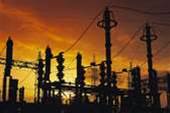
IT demand alone has created an energy consumption goliath. The annual energy costs of an average UK data centre are estimated at about €5.3 million ($8.14 million) per year, according to the Power and Cooling Survey 2006, from analyst firm BroadGroup.
By 2010 this cost is expected to more than double to €11 million ($18.29 million), making the UK the most expensive place in Europe to host a data centre.
The sudden rises in energy costs this year have brought the problem into sharp focus, says the report’s author, Keith Breed. Energy costs now account for nearly 30 percent of a data centre’s operating costs.
High-density technologies, such as blade computers, have enabled firms to pack increasing amounts of computing power into small spaces. Although the space required to house computers, in terms of processing power per square metre, has shrunk, power requirements have increased. Consequently, the requirement for efficient cooling has also risen, exacerbating power consumption.
Further increases in power consumption are not sustainable beyond the short term, the report shows.
“Datacentres are hitting a technological ceiling where cooling technologies could become the prohibitive factor – for either cost or reliability reasons,” says Sir Anthony Cleaver, chairman of data centre operator IXEurope. “However, I believe the IT industry is one of the most adaptable of all industries and we are already seeing the major hardware manufacturers responding. We need Moore's law to be replaced with Moore's green law – every 18 months halving the power needed to carry out the same calculations.”
BoradGroup’s research shows that innovative new concepts to reduce energy usage are under development or about to be introduced by major suppliers such as IBM, HP and Dell.
Investments in technology come in the shape of new ultra-thin high density server designs and storage technologies, hydrogen fuel-cells as alternative ‘green’ power sources, virtualisation technologies that spread the use of computing resources to minimise heat, and nanofluid-cooling systems for the IT estate.
Meanwhile, analysts are looking at how firms bulk-purchase electricity, some proposing financial derivatives exchanges to buy or sell back energy to stay competitive or billing energy costs direct to customers.

.png&h=140&w=231&c=1&s=0)
_(20).jpg&h=140&w=231&c=1&s=0)





_(26).jpg&w=100&c=1&s=0)

 iTnews Executive Retreat - Security Leaders Edition
iTnews Executive Retreat - Security Leaders Edition












_(1).jpg&h=140&w=231&c=1&s=0)



